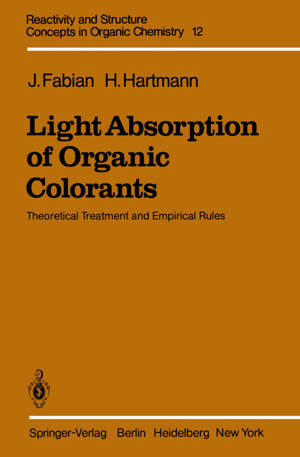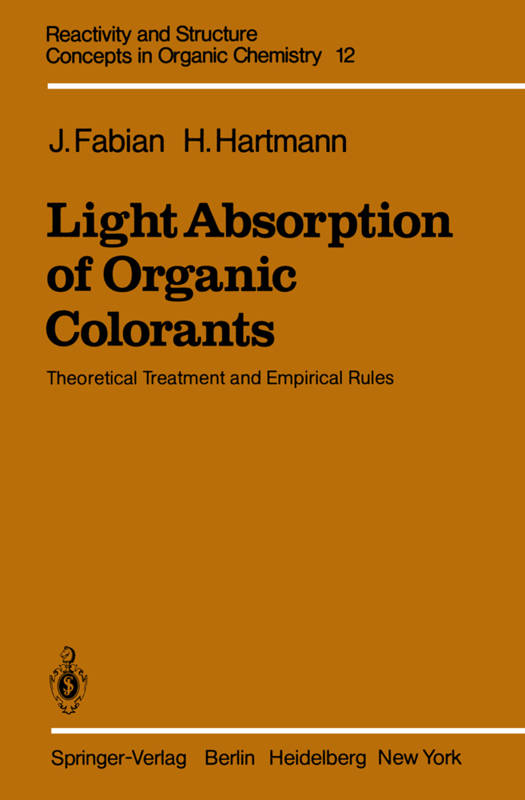
- Afhalen na 1 uur in een winkel met voorraad
- Gratis thuislevering in België vanaf € 30
- Ruim aanbod met 7 miljoen producten
- Afhalen na 1 uur in een winkel met voorraad
- Gratis thuislevering in België vanaf € 30
- Ruim aanbod met 7 miljoen producten
Zoeken
Light Absorption of Organic Colorants
Theoretical Treatment and Empirical Rules
J Fabian, H Hartmann
€ 118,45
+ 236 punten
Omschrijving
Although studies on synthetic dyes have been performed for more than 100 years, their detailed elucidation requires further extensive research. The discovery of novel high polymers, the necessity of supplying a whole range of shades and increasing require- ments for dyestuffs of high fastness properties give rise to a permanent search for new dyes. Extensive investigations on dyes were also occasioned by various applications in the field of spectral sensitization and of staining of biological specimens. Another more recent development concerns the lasing properties of some organic dyes. Most of the progress, however, was only achieved by time-consuming, purely empirical approaches and theoretical understanding of the dye properties is only at its very beginnings. The color is the sine qua non of every dye. For this reason organic chemists and color chemists have looked for relations between the "color and constitution" of dye molecules for a long time. This knowlege as a whole is known as "theory of color". The classic theory of color was established abou t 100 years ago by Witt and was signi- ficantly extended 50 years later by W. Konig.
Specificaties
Betrokkenen
- Auteur(s):
- Uitgeverij:
Inhoud
- Aantal bladzijden:
- 248
- Taal:
- Engels
- Reeks:
- Reeksnummer:
- nr. 12
Eigenschappen
- Productcode (EAN):
- 9783642675898
- Verschijningsdatum:
- 21/01/2012
- Uitvoering:
- Paperback
- Formaat:
- Trade paperback (VS)
- Afmetingen:
- 170 mm x 244 mm
- Gewicht:
- 417 g

Alleen bij Standaard Boekhandel
+ 236 punten op je klantenkaart van Standaard Boekhandel
Beoordelingen
We publiceren alleen reviews die voldoen aan de voorwaarden voor reviews. Bekijk onze voorwaarden voor reviews.








